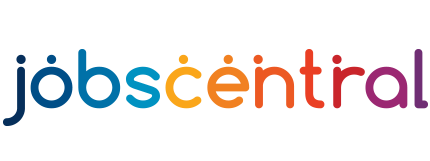Learning How to Create and Innovate Using the 70:20:10 Model

By Dr. Ken Hudson
There is a well established model of personal development that suggests that effective learning consists of
· 70% from on the job training
· 20% from other people and
· 10% from formal courses and reading
Whilst the actual percentages are not to be taken too literally this model does provide a useful guide as to how (marketing managers and leaders and their followers) should allocate their time to learn a new skill.
With this in mind what if we applied this approach to the development of innovation as a skill? After-all even Steve Jobs had to learn how to create and innovate. To be sure he had a natural talent but this also had to be honed and developed through hard work.
So what might a marketing innovation 70:20:10 framework look like?
Here is my suggestion:
· 70% of time spent innovating in your current role
· 20% innovating with others and
· 10% learning new creative thinking and innovation processes, theory and tools.
Let’s consider these one at a time.
Innovating in your current role (70%)
Learning how to innovate like any skill is best done through actual experience. This could be as simple as trying a new way of conducting a meeting for example by rotating who is the chairperson. Or having an email free day once per week. Or trying a different way to brief your advertising agency or market research companies.
The important point here is that the change is a small one and within your control. In this way you can see what happens, learn from the results and perhaps share what you have learned with others.
Yet whilst this form of everyday innovation could have the greatest impact on overall innovation it is the one that is the most resisted. Perhaps it is because many marketing leaders only believe that innovation only applies to big, new products, or process changes. Or perhaps because so many leaders are extremely busy and time-poor the very idea of trying something new and different is put on the back-burner as being inefficient.
Another reason is that there are a lack of role models for the marketing leaders of the future to learn from. Just like in an apprentice system where the young employee works side by side with the master craftsman guiding him or her on the job – I see a similar situation with teaching prospective leaders the art and science of innovation.
Imagine the cumulative impact of having everyone in marketing trying at least one new thing every month. Imagine the collective creativity and learning that could be released and the impact of culture simply by applying innovation to every leaders role. The other advantage is that innovation becomes the responsibility of each and every person in marketing rather than someone else in the organisation such as the innovation director (important as this is).
Innovating with others (20%)
I believe the opportunity here is for marketing managers and leaders to both learn from each others but also by regularly talking to customers, clients, partners and suppliers. The aim is to develop an informal ideas community where new concepts can be discussed and problems solved. I would for example, conduct monthly expression sessions where any manager or leader can present a pressing issue that they would like the group to address. We did this recently with a health care business where I showed the managers how to Blitz (i.e. an accelerated creativity process) and we ended up generating ideas that saved literally thousands of dollars.
Included in innovating with others is challenging the marketing group to make meetings and brainstorming sessions more engaging and productive. For example, you can change the location of a brainstorming session or have it at a café or a supermarket etc.
After each session a group leader interested in improving their performance and learning might ask themselves what did I (and we) do well in that meeting, what might I do differently and what did I learn.
10% learning new creative thinking and innovation processes, theory and tools
The smallest amount of time should be spent learning new creative thinking and innovation processes, theory and tools in formal workshops or training sessions.
There are many different tools other than brainstorming for example, which progressive leaders should learn, and use when they need to. Whilst this amounts to the smallest amount of time it sometimes can have the greatest impact. If you can learn a new tool such as my Power of 3 tool (i.e. consider a usual, different and radical idea) then this can lead to real breakthrough leaps in productivity and growth. By using the Power of 3 tools you create a more divergent range of ideas and solutions and give people permission to be creative and explore those real left-field ideas.
These types of powerful tools can be learned in my upcoming Marketing Creativity courses taught through MIS.
The 70:20:10 model is a powerful one that can help anyone in marketing to produce better ideas, new products and improve their skills and results.
This article is written by Dr Ken Hudson, former marketing director at American Express and international author, speaker and trainer. He has a PhD in Organisational Creativity and has published 3 books on idea generation. He specialises in unlocking creativity and innovation in individuals, groups & teams quickly.
Dr Hudson invented and taught Marketing Creativity at the University of Technology, Sydney for 10 years at a post-graduate level (as a part-time lecturer). He is Australia's leading authority on creativity & innovation and believes that every individual, group, team and organisation has a latent potential for greater creativity & innovation. He has been interviewed by Business Review Weekly, ABC Radio, The Australian Financial Review, The Boss Magazine and contributed many articles for Marketing Magazine, HR Monthly, about creativity, innovation & speed thinking.
Dr Ken Hudson will be conducting the following courses at the Marketing Institute of Singapore (MIS):
· Speed Thinking [7 Oct 2015]
· Marketing Creativity [8–9 Oct 2015]











